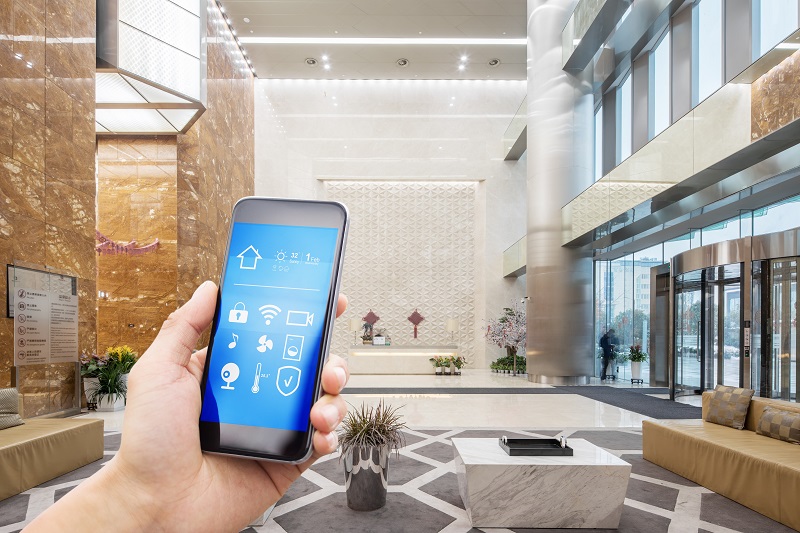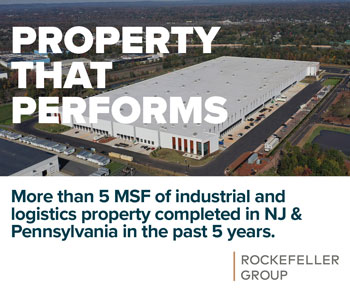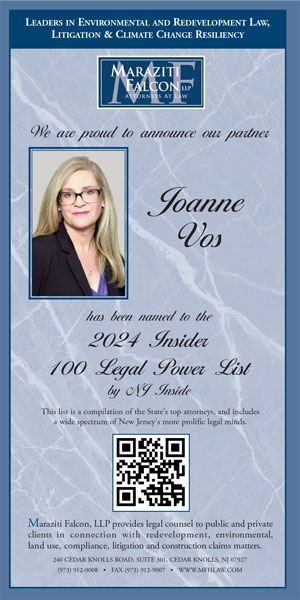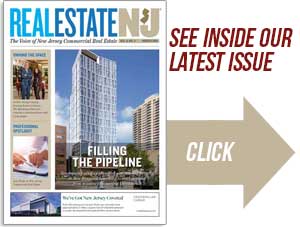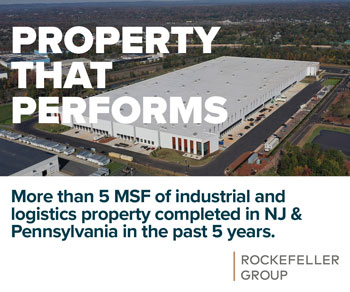By Michael G. McGuinness
This year’s headlines have been dominated by the pandemic, financial crisis, racial justice movement and climate change-induced natural disasters that displaced 900,000 Americans in 2019. While I am no expert, I suggest we get used to this level of turmoil for now, especially given the recent U.S. elections and aftermath.

Amidst this chaos, PwC and the Urban Land Institute released in October their info-packed annual report, “Emerging Trends in Real Estate® 2021: US and Canada,” which looks at real estate investment and development trends, finance, capital markets, property sectors and other issues. The timing is strategic, as this information can help local, state and federal policymakers understand the challenges we must face and the emerging opportunities we cannot afford to squander. This article focuses on a narrow subset of covered issues and themes: sustainability and climate change; the renewed importance of home; urban migration to the suburbs; social equity; and proptech, or property technology.
New Jersey is a coastal and densely populated state, so minimizing the adverse impacts from rising sea levels, flooding, extreme heat and storms should be our first order of business toward achieving sustainability amid relentless climate change. The “2020 New Jersey Global Warming Response Act 80×50 Report,” released by the state Department of Environmental Protection in October, finds that the “recent experience of many New Jerseyans during the COVID-19 pandemic (yielded) … significant short-term emission reductions in the transportation sector” resulting from the “ability of institutions and businesses to integrate remote work programs while maintaining productivity.” A good start, but New Jersey will not be able to comply with a statutory mandate of an 80 percent reduction in greenhouse gases by 2050 unless we transition 88 percent of all cars, SUVs and light duty trucks to electric or hydrogen power by 2030; electrify 22 percent of all new building stock by 2030 and 90 percent by 2050, while converting existing buildings; and convert our existing power-generating facilities to renewable energy sources. We must travel this tough road to meet these stringent and critical goals.
Real estate investment managers and institutional investors, facing rising insurance and mitigation costs and heightened awareness of the impact of climate change, increasingly recognize climate risk as a core issue. While climate migration remains a newer topic, some real estate investors are beginning to consider climate risk at the market or city level as well as the asset level, as explored by the Urban Land Institute and Heitman in “Climate Risk, Real Estate and Market Assessment.” A growing number of investors are looking to develop indicators to better assess these risks — such as assessing a city’s resilience strategy, including existing and planned infrastructure and resilience policy — to benchmark these efforts. Analytical tools for measuring market-level vulnerability are still nascent, but the increased recognition of migration potential may drive further interest, technological innovation and integration into investment processes, according to ULI’s Urban Resilience program. It won’t be long before the insurance industry starts to factor the financial risks from climate change into operations and business strategies.
As reported in “Emerging Trends,” some cities are beginning to position themselves as potentially attractive havens for climate migrants. The 2018 Green Cincinnati Plan predicts that “many businesses seek to ensure continuity of operations and may consider relocating from disaster-prone locations to relatively safe locations like Cincinnati. This will provide economic opportunities, if Cincinnati is prepared to market itself to these businesses.” The mayor of Buffalo, New York, recently declared that city a “climate refuge.”
The importance of the home has skyrocketed in the pandemic, as workers and families were forced to work and “school” from home. While virtual schooling will likely be limited and temporary, working from home may be a consumer shift, as new homebuyers will seek quiet, private spaces with good access to technology. We should see increased demand for homes with separate living areas, kitchens and private entrances, as multiple generations share space. The Brookings Institution cites work from home (WFH) as a trend that goes back a decade, but new home design is pivoting dramatically toward a more integrated live/work/play/learn balance of indoor and outdoor living solutions. Non-negotiables include improvements in design for health and function, and even accessory dwelling units.
Since not everyone is blessed with the means to own a home, I wonder if the residential real estate industry will be able to develop products that are more affordable, attainable and accessible to expand the universe of buyers, or choose to continue serving a shrinking number of people who can afford ever more expensive homes and communities. The reality is that WFH is not preferred or ideal for all employees, and it raises important cultural and social equity issues. Younger employees may prefer working in an office for a better learning environment and business and social connection opportunities. Also, younger and lower-income employees are less likely to have adequate space or the high-speed connectivity needed to work from home.
“Emerging Trends” states that an affordable housing crisis is likely to explode without government intervention. The COVID-19 pandemic has swelled the number of unemployed low-income workers, many of whom will struggle to pay rent until those jobs are restored. Federal and local eviction moratoria have delayed a spike in evictions and additional homelessness until 2021. The year 2020 may have marked a tipping point in national support for greater racial equality. How this translates into long-term change in the real estate sector remains to be seen. The National League of Cities estimates that Fiscal Year 2021 general revenues — including sales, income and property taxes — will be 13 percent less than Fiscal 2020, which does not bode well for school funding, which is crucial for economic competitiveness and social equity.
The migration from cities to suburbs is a trend that was already underway before the pandemic accelerated it. Sans virus, demographics was the key driver as the population in family formation years (ages 30-49) was already targeted to reach 8.4 million between 2020 and 2030. As the pandemic worsened, city dwellers young and old were leaving the dense central business districts with their high-rises, elevators and dependency on mass transit to less congested, typically auto-dependent areas with larger dwelling units, including living with parents, and more public open space.
Cities have started to adapt to COVID-19 restrictions with creative solutions such as street dining and more public space designated for nonvehicular use. Building on decades of recognition of the value of parks and green space, and the need for lower-cost housing and quality schools, further innovation is both likely and necessary to provide these and other amenities that are often more widely available in suburbs. Center-city neighborhoods and close-in suburbs have blossomed into attractive places to live and raise families. Markets to watch include 18-hour cities like Austin and Nashville, which rank high on several factors, such as private-sector investment, public transportation, crime rate, racial equity and affordability. Even the older, established northern New Jersey and New York City metro area “ascending suburbs” are gaining favor from businesses and residents from the boroughs of New York City.
With so much of the workforce operating remotely, proptech, or property technology, has never been more critical for managing properties; business continuity; customer engagement and sales, such as property tours; and monitoring costs and efficiencies. Proptech’s value in data analytics for investment decisions, optimal asset allocation and cybersecurity is well-documented. And don’t forget that all this data, which is integral to our connected lives, resides in data centers. New Jersey government officials would be wise to attract more of these facilities, since their role and value will only increase over time.
As reported in “Emerging Trends,” proptech will take the lead in managing indoor safety and in informing users and customers about ongoing safety procedures and status. Health safety in buildings is likely to become a must-have and a critical differentiator in the wake of COVID-19. Making substantive health safety changes may be the first challenge, requiring upfront capital investments and ongoing operating costs. Convincing companies, workers, customers and guests that office buildings, retail stores, restaurants and other public-use facilities are safe is another challenge — a tall order, but one the real estate industry must solve.
The increased focus on health safety will lead to new services and technologies that provide cleaner buildings and indoor air, sensors and touchless entry (via an app that opens doors). More fresh air in buildings may be healthier but could conflict with environmental sustainability goals as outlined in the DEP’s “80×50 Report,” particularly the goal of less energy consumption. The costs of improving health safety are estimated to be 1 to 2 percent of total development budget.
Speaking of workforce wellness, New Jersey has a new free and secure mobile app that anonymously alerts users if they have been in close contact with someone who has tested positive for COVID-19. The app also provides up-to-date information on New Jersey reopenings, key COVID-19 metrics and a user-friendly symptom tracking tool. COVID Alert NJ uses Bluetooth proximity technology. The app will never record any identifying data. All users will remain anonymous. Learn more and/or download the app here.
To close: “Disruption is occurring faster than ever. The world is moving from physical to digital, wasteful to sustainable, delayed to instantaneous, manual to automated. The pace and disruption force companies to rethink how they do business to prepare them for the future, and provide fertile ground for opportunity and innovation,” according to “The Future of Logistics, American Journal of Transportation, Special October 2020 Report.” We don’t have a moment to waste — roll up your sleeves, reboot and refresh.
NAIOP New Jersey will take a deeper dive on many of these topics (and more) at our Dec. 8 Webinar “Back to the Future of Office.” Details and registration at www.NAIOPNJ.org.
Michael McGuinness is CEO of NAIOP New Jersey and has led the commercial real estate development association since 1997. NAIOP represents developers, owners, asset managers and investors of commercial, industrial and mixed-use properties, with 830 members in New Jersey and over 19,000 members throughout North America.

